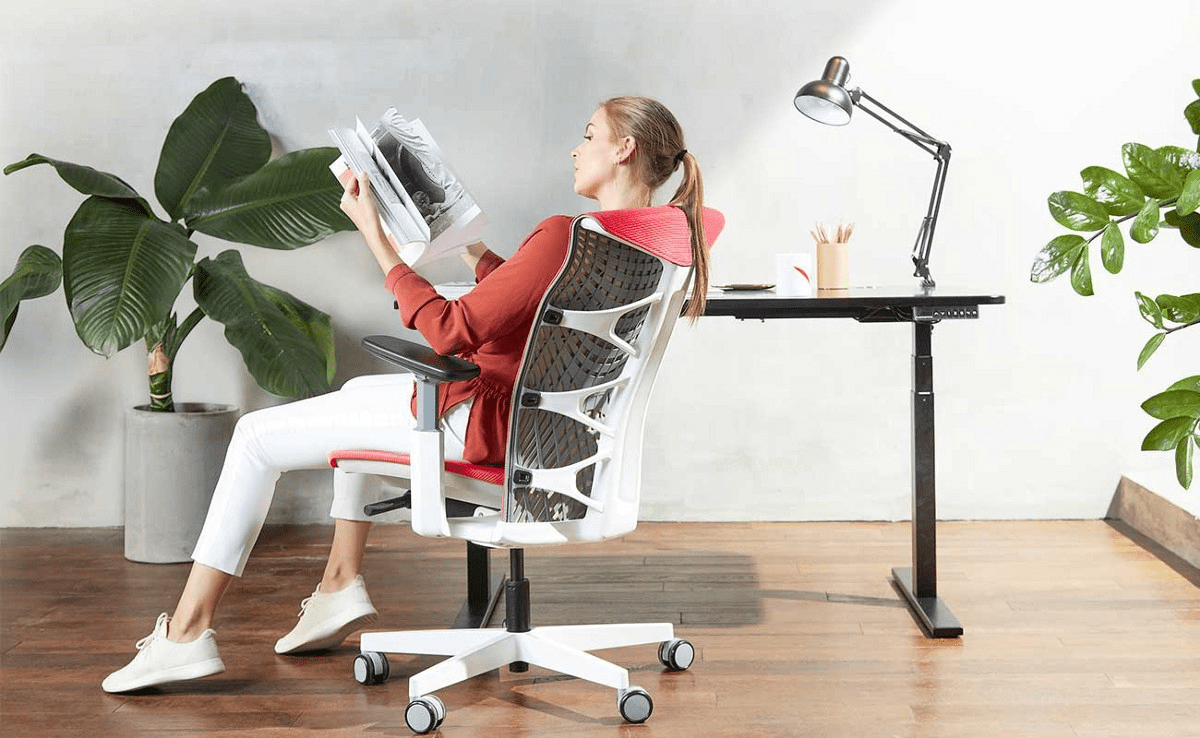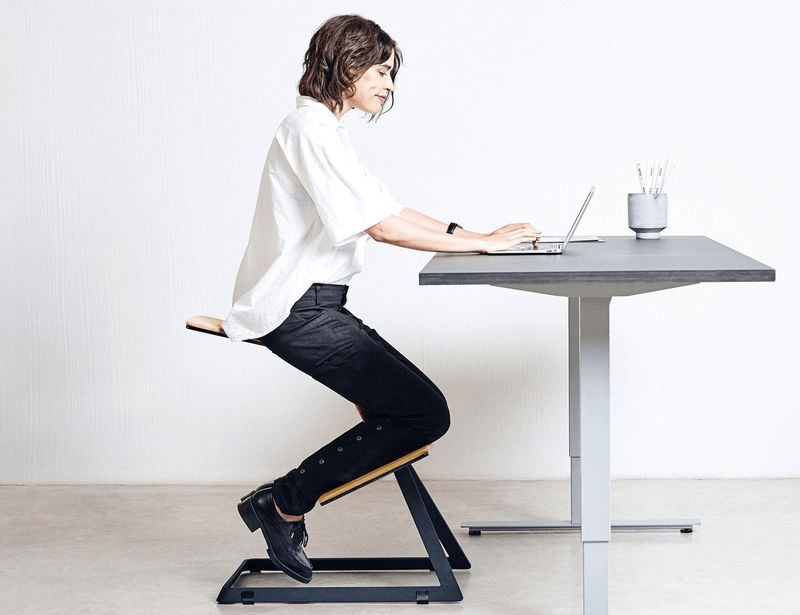
Ergonomic chair is a great creation for people who sit to work a lot these days. In this article, let’s get to know more about how to get used to your ergonomic chair if you have switched to it recently with FittingChairs.
Why is The Ergonomic Chair Hurting My Back?
If you have encountered trouble of spending your money on a premium ergonomic chair just to realize it can hurt your back, this is not a pleasant purchasing experience.
To get maximum comfort, you should let your feet be flat on the floor when you sit and your arms should rest comfortably on your desktop or any of your workspace surface.
Your weight should be distributed evenly between your torso and legs.
If you feel any soreness or stress on your body, it’s a sign to modify your chair.
To use an ergonomic chair in the most effective way, you can consider to combine it with an ergonomic laptop setup and an ergonomic standing desk.
How Should An Ergonomic Chair Feel?

When you invest to buy a new high-end ergonomic chair, it’d better feel like it’s cradling your whole body.
It should ease pressure you feel on your back, hips, thighs, and legs and provide comfort when you sit on it.
Ergonomic chairs are designed to help relieve the stress you feel on your body while sitting at a desk to work. It gives a great support for your entire body, lumbar, legs, and back. It also helps to distribute your weight over a wider area.
Should Your Knees Be Above Your Hips When Sitting?

Most people do not know how to sit properly in a chair. Actually, knowing how to sit in a chair is not less important.
The most basic thing is always keeping your back straight.
Mastering how to sit correctly is essential for keeping yourself healthy while working from home.
Here is a guide of how to correctly sit:
- Sit with your straight back and your shoulders back. Make sure your buttocks touch the back of the chair.
- While sitting, ensure that all three normal back curves are present. To help maintain the normal curves in your back, utilize a lumbar roll or a small rolled-up towel.
- Slouch entirely to the back of your chair.
- Accentuate your back curves as much as possible. Hold that position for a few seconds. Then release the position slightly. That is a good posture.
- Evenly distribute your weight on both hips.
- Make your knees bend at a correct angle. Do not cross your legs and keep your knees even or a little higher than your hips.
- Always keep your feet lay flat on the floor.
- Change your position for each 30 minutes.
- Adjust the height of your chair to sit close to your desk and tilt it up toward you. Relax your arms, elbows and shoulders.
- Do not twist at the waist while sitting in a rolling chair. Turn your body instead.
- Move to the front of the chair when you want to stand up. Avoid bending forward at your waist.
Why My Office Chair Hurts My Hips?
If you feel hurt when sitting at your ergonomic chair, chances are you have a wrong sitting position.
Moreover, it can be because the strength of your hips’ muscles has degraded.
You should stand up and walk around for a while after each 45 minutes to one hour sitting to prevent stiffness and muscle atrophy.
What Angle Should I Position My Body in My Chair?

To guarantee a proper sitting posture, it has been adviced that you should keep a 90-degree angle between your legs and torso. But it might not be right all the time.
According to some researches, a more reclined angle of 135 degrees can be better to bring comfort and lower the risk of degenerative disk disease.
How to Set Up Your Ergonomic Desk Chair?

Below are some tips to set up your ergonomic desk chair.
Adjust Your Seat Height
Setting your ergonomic chair’s height right is critical.
To do so, you set it at a level where your feet can lay flat and rest on the floor to prevent cutting off blood flow by being too low or too high. For most people, this height ranges from 16-22 inches from the floor.
Adjust Your Seat Depth
The seat depth of your chair will decide there is how much space between the edge of the seat and your buttocks.
Pay attention to adjust your chair height if you can feel your thighs and buttocks are rubbing against the seat’s edges.
Adjust Your Lumbar Support
Lumbar supports are created to help in keeping your lower back in suitable alignment, relieving pain which is resulted in by poor posture.
To provide proper support, ensure the lumbar support is placed firmly and gently against your lower back.
Adjust Your Armrests
Armrests can give you additional comfort when typing, reading, or using your mouse. You need to adjust armrests so they can rest in comfort while you are sitting with proper posture.
Adjust Your Keyboard Placement
A keyboard tray which is suitably positioned can help to relieve strain on wrist and forearm. If you use a keyboard tray, you should consider the height difference when compared to puttting it on your desktop.
Adjust Your Monitor Stand
Your eye level should be put toward the top of your computer monitor. By doing this, you can look down while looking at your screen. It is vital to ensure your adjustable desk and chair have the same height for maximum ergonomic comfort.
Adjust Your Head Rest
If your ergonomic chair is designed with a head rest, position it properly. You should make some adjustments for your headrest to support the top of your neck, enabling the base of your head to rest comfortably against it.
Hope this article has given you some useful information to get used to ergonomic chair as well as some tips to get the most proper posture when working with an ergonomic chair. Follow FittingChairs for more sharing about working model.






